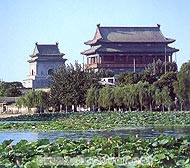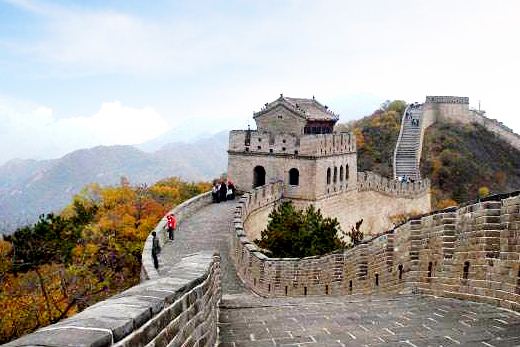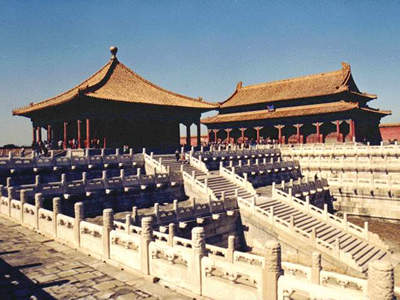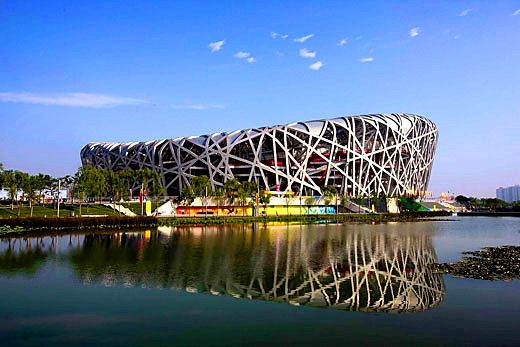 The Drum and Bell towers are situated at the northern end of the central axis of the Beijing Inner City to the north of Di' anmen Street.
The Drum and Bell towers are situated at the northern end of the central axis of the Beijing Inner City to the north of Di' anmen Street.
The Drum Tower was built in 1272 during the reign of Kublai Khan, at which time it stood at eh very heart of the Yuan capital Dadu. At that time it was known as the Tower of Orderly Administration (Qizhenglou). In 1420, under the Ming Emperor Yongle, the building was reconstructed to the east f the original site and in 1800 under the Qing Emperor Jiaqing, large-scale renovations were carried out. In 1924, the name of the building was changed to the Tower of Realizing Shamefulness (Mingchilou) and objects related tot eh Eight-Power Allied Forces' invasion of Beijing and later the May 30th Massacre of 1925 were put on display. Nowadays, the upper story of the building serves as the People's Cultural Hall of the East City District.
The first level of the Drum Tower is a solid square terrace four meters high, 55.6 meters long and 30 meters wide. The front and rear of the terrace are pierced with three arched openings and the two sides with one opening each. The broad, squat multi-eaved wooden structure built atop the terrace is impressive with its red wall and yellow glazed roof. In ancient days, the Drum Tower was the time keeping center for the whole city and was equipped with bronze clepsydras (water clocks) and drums that were beaten to mark the hours.
The four bronze clepsydras, which once functioned in the Drum Tower, were reputed to date from the Song Dynasty. Set between these four devices was a large bronze gong, which through a series of mechanical devices was linked to the water clocks and sounded each quarter of an hour. When the system of telling time with incense coils, which burned for hours were introduced, the clepsydras fell into disuse.


 About Beijing
About Beijing 


